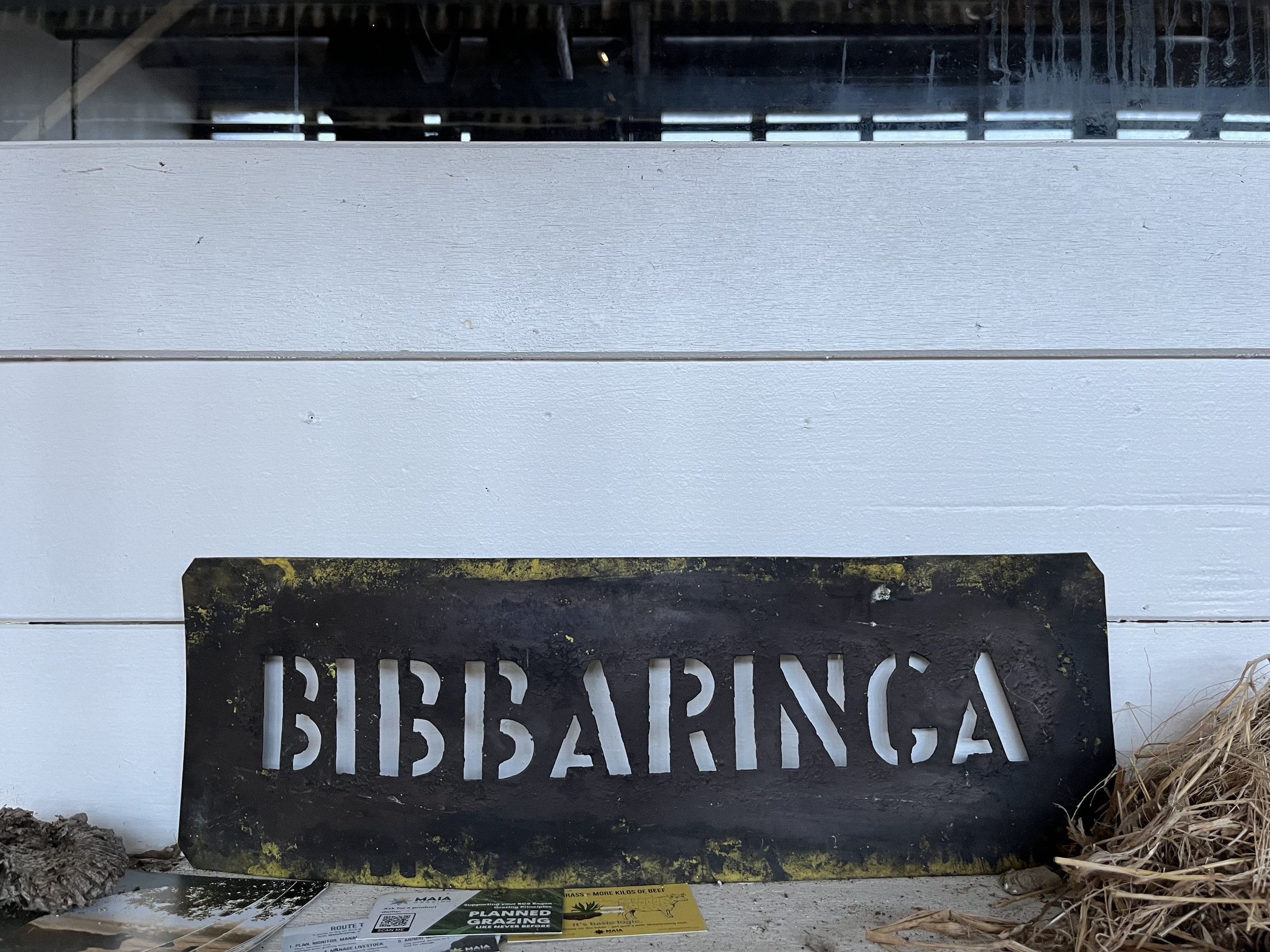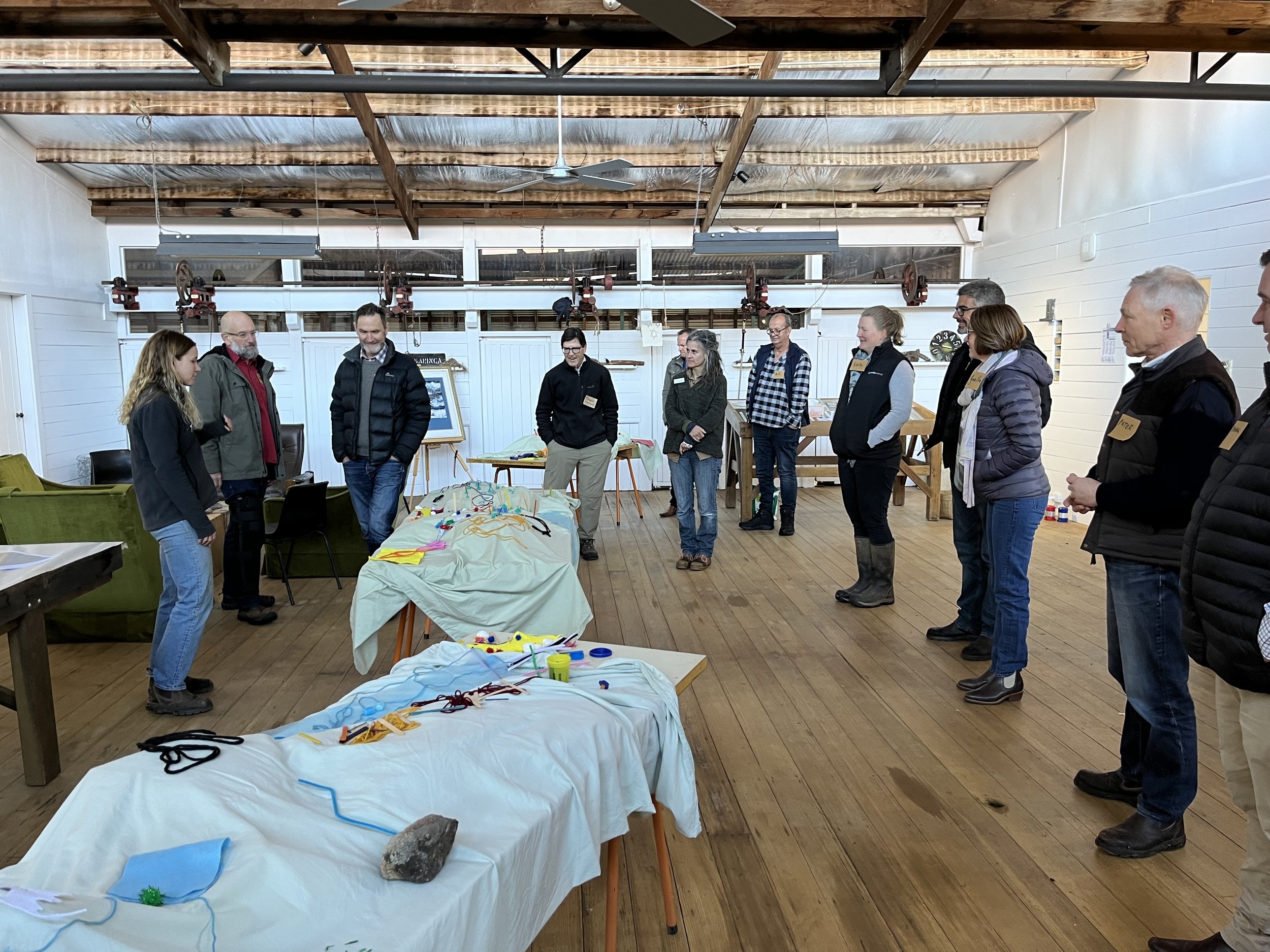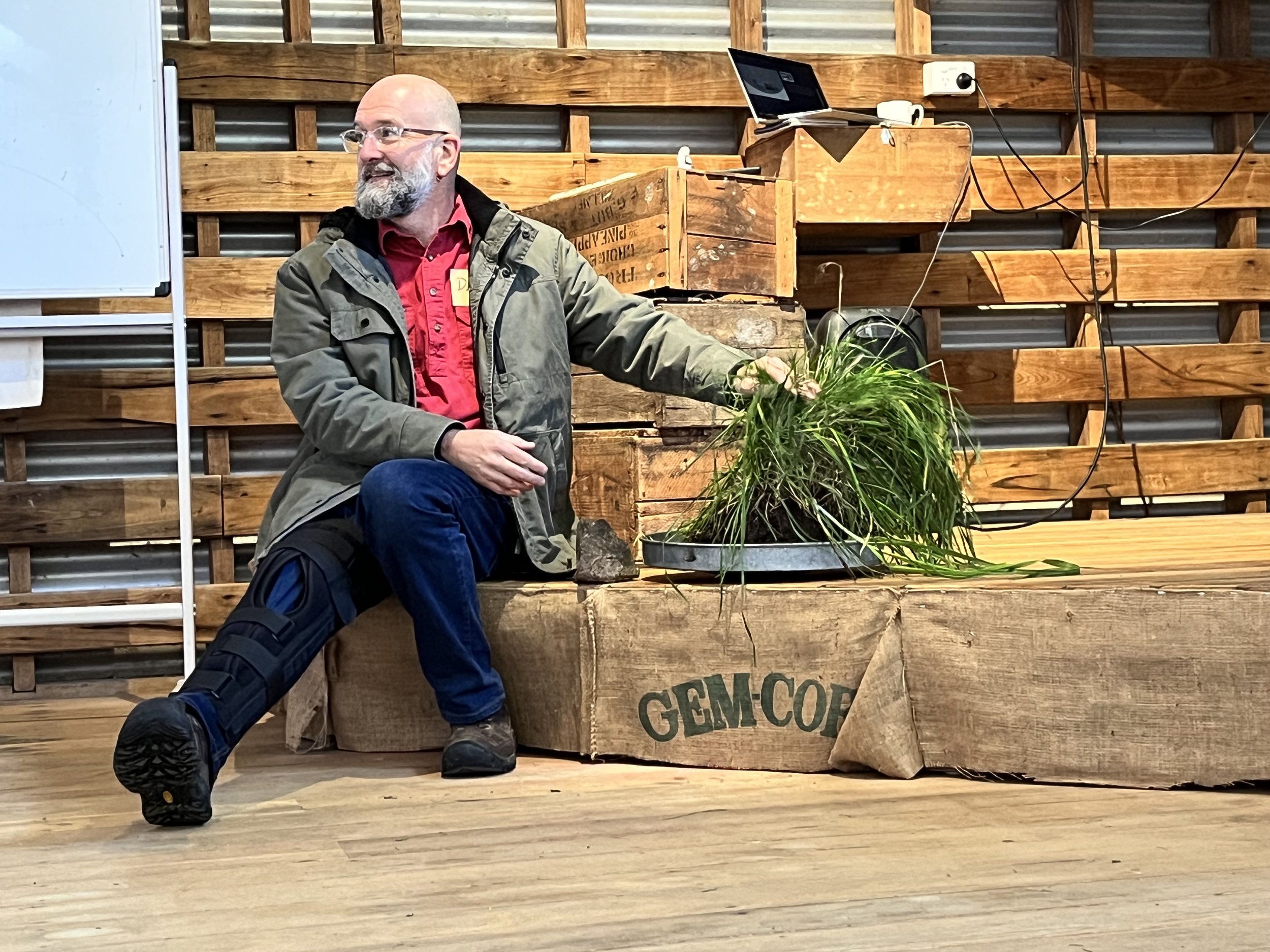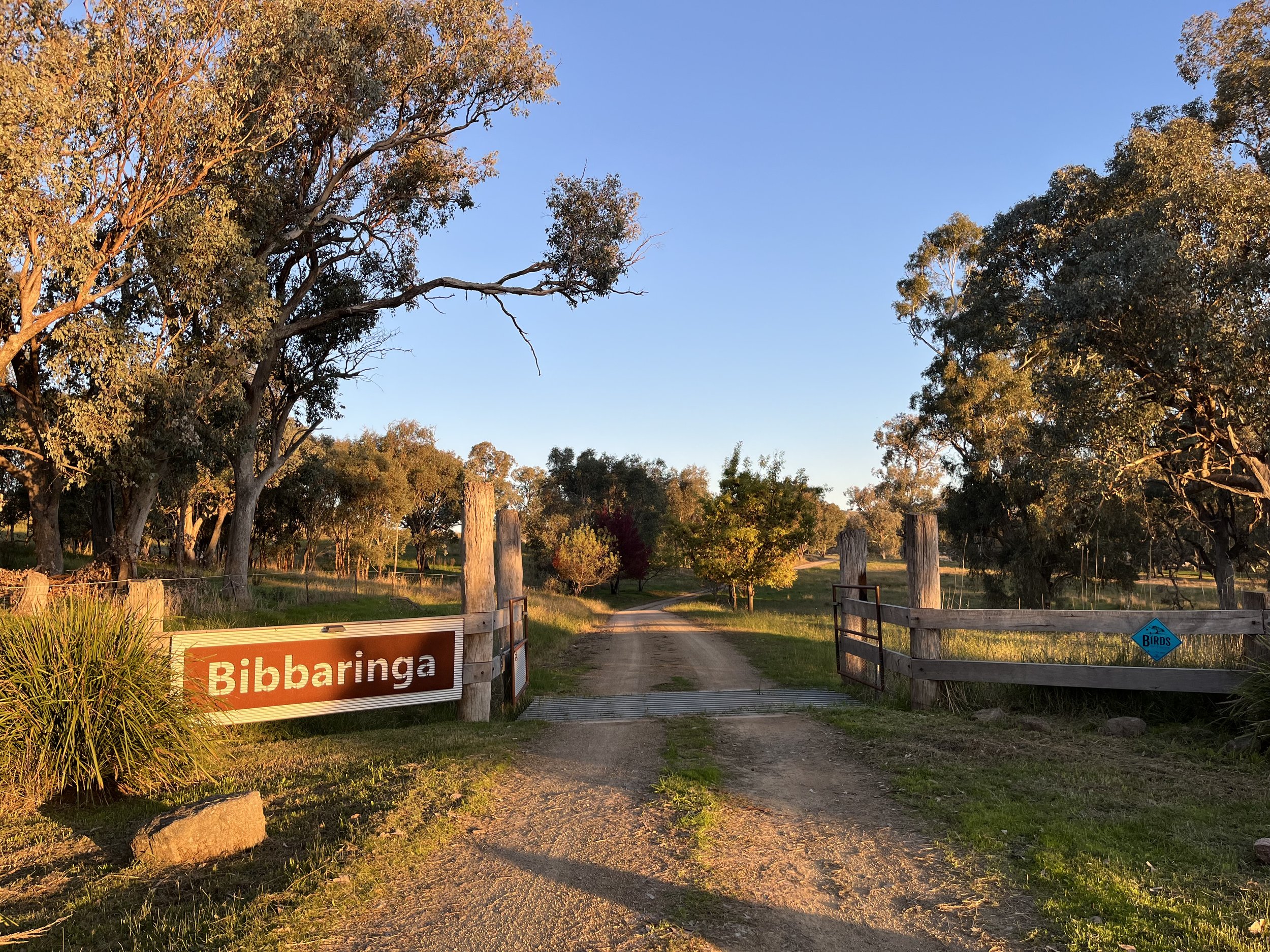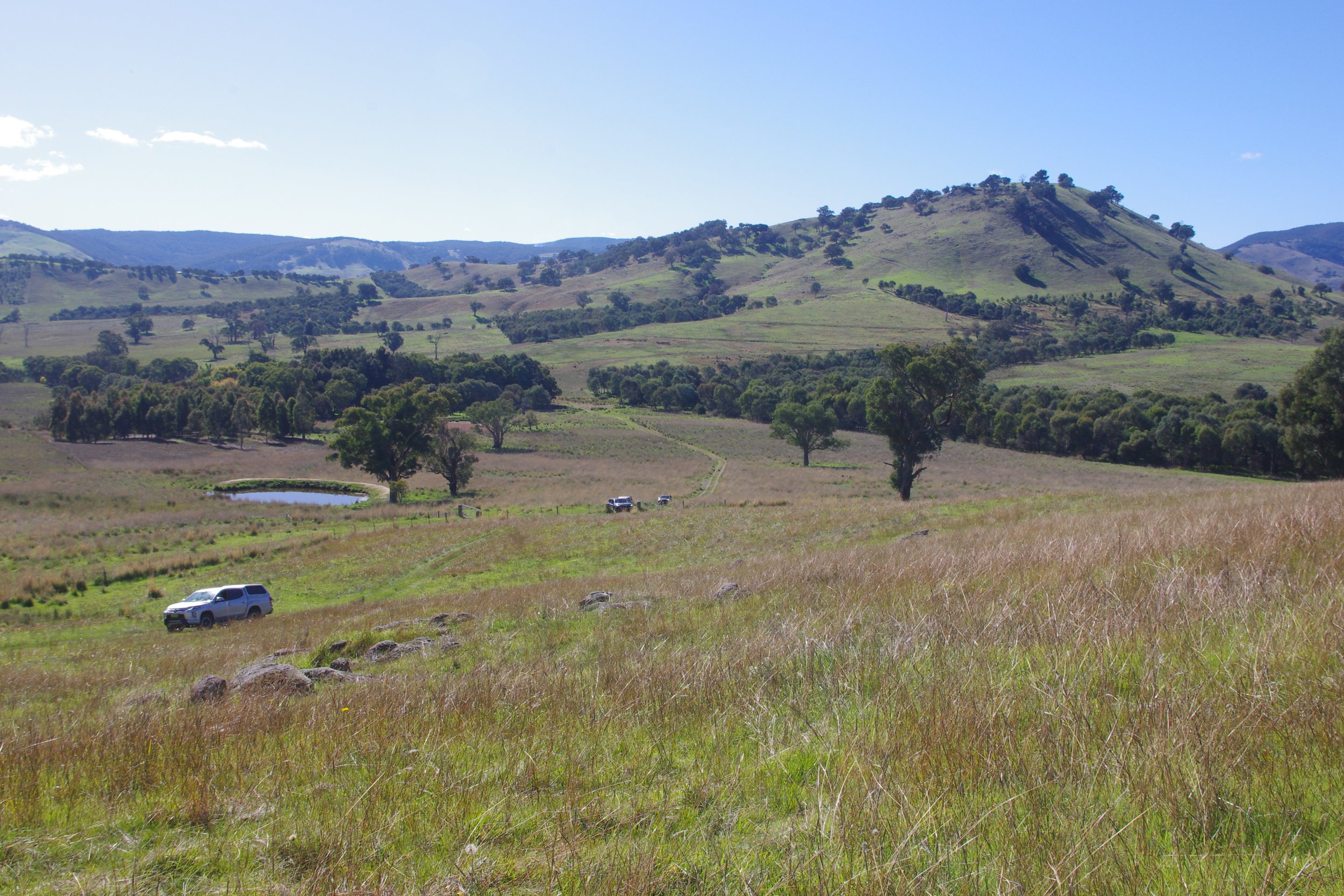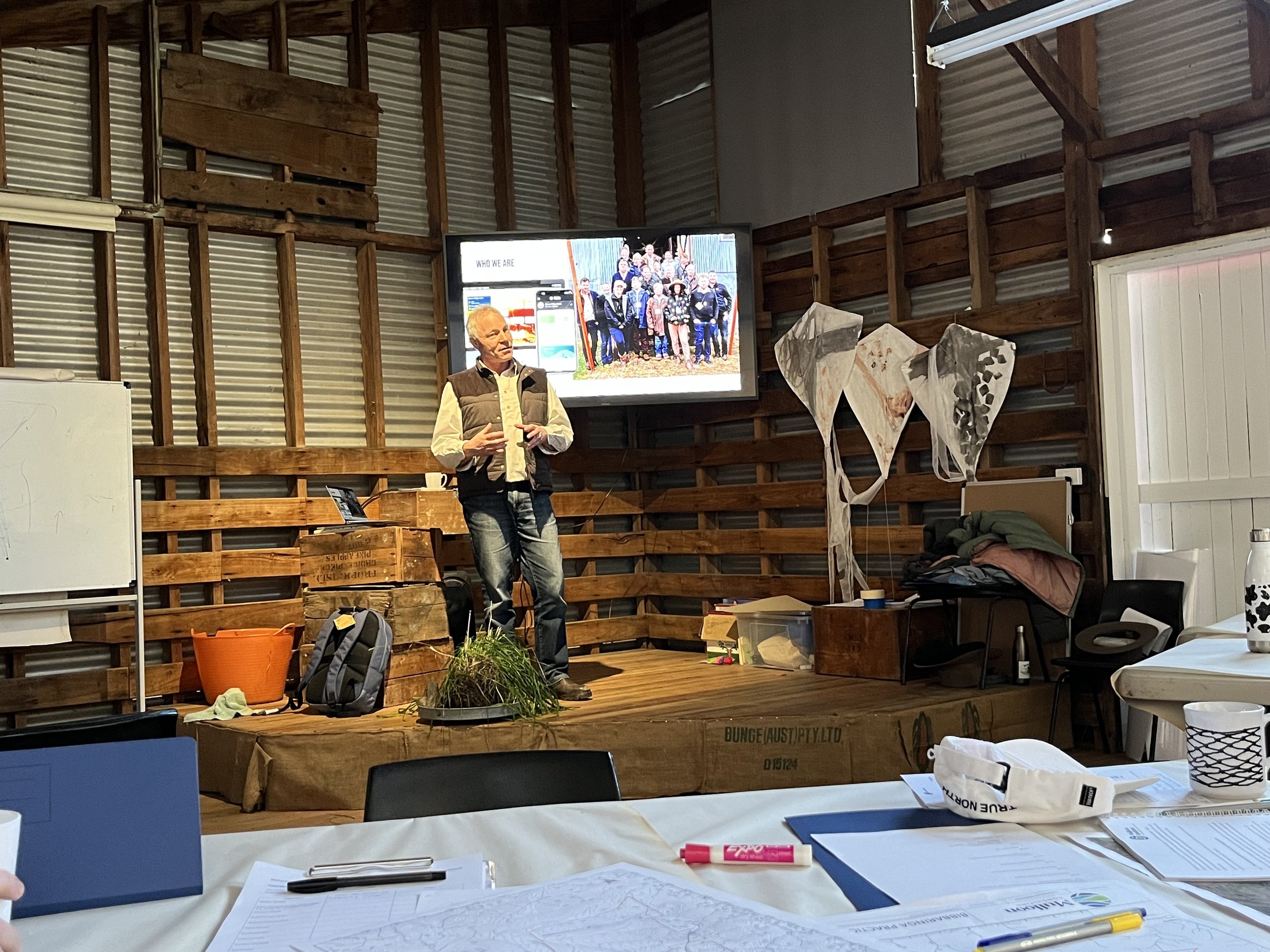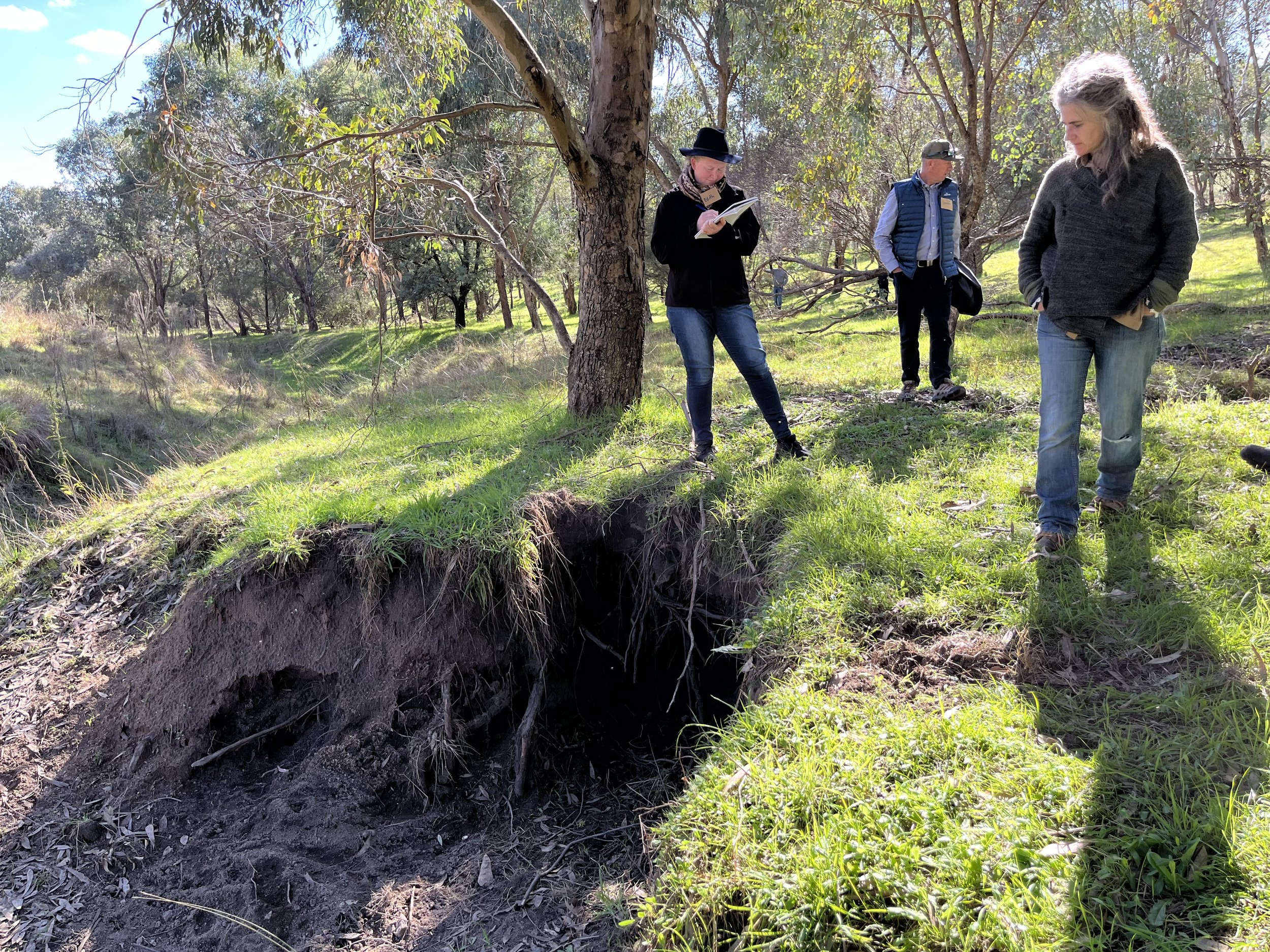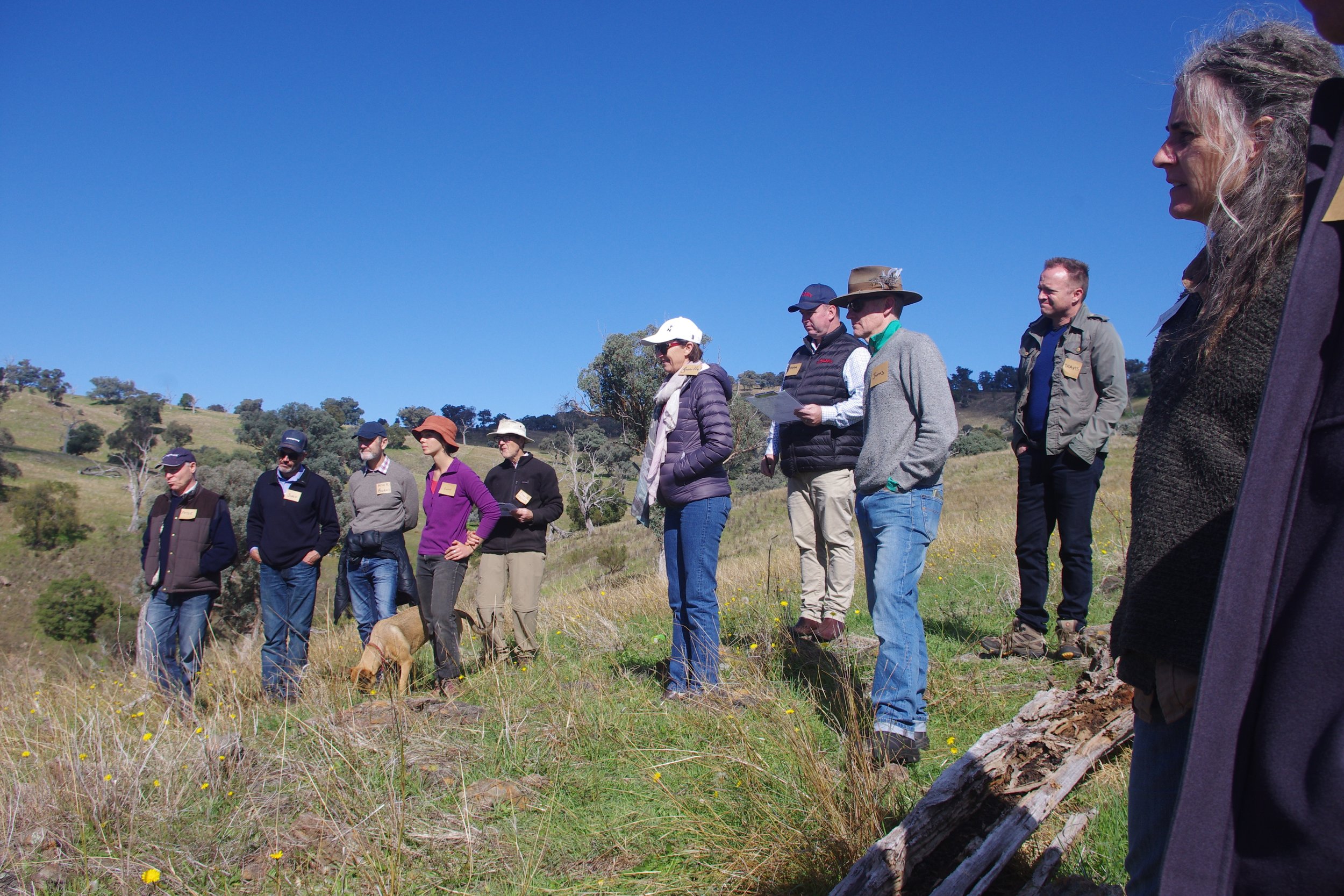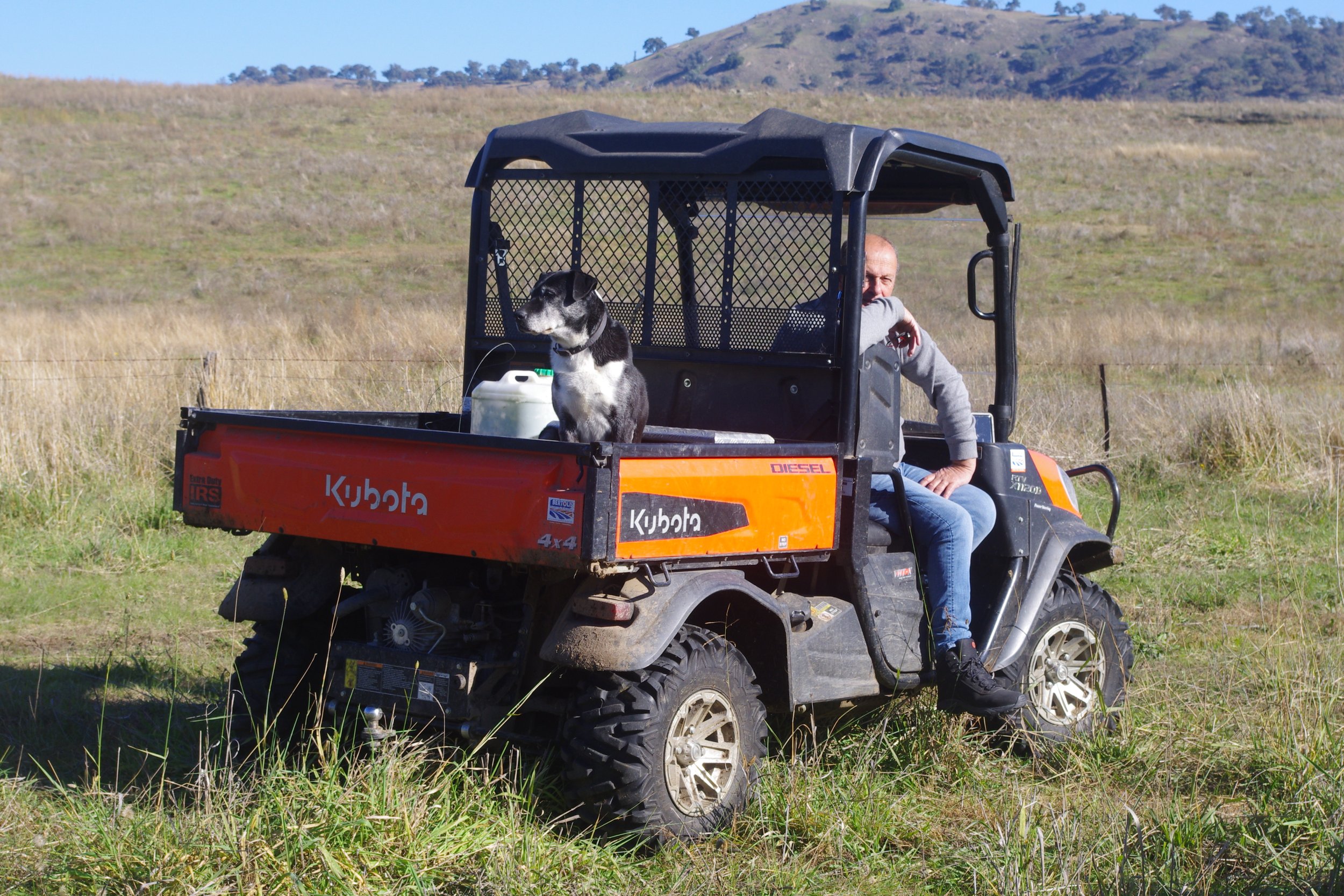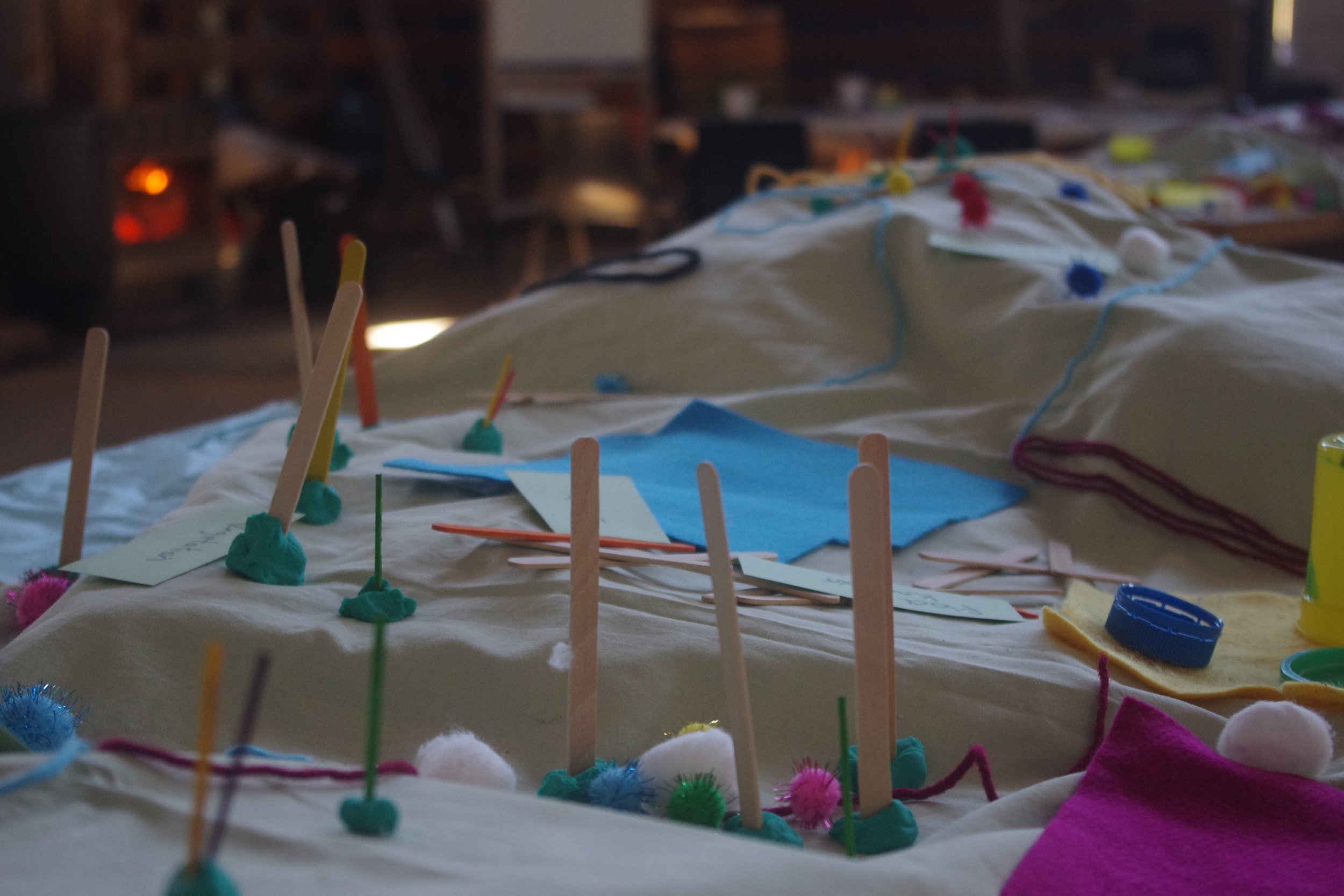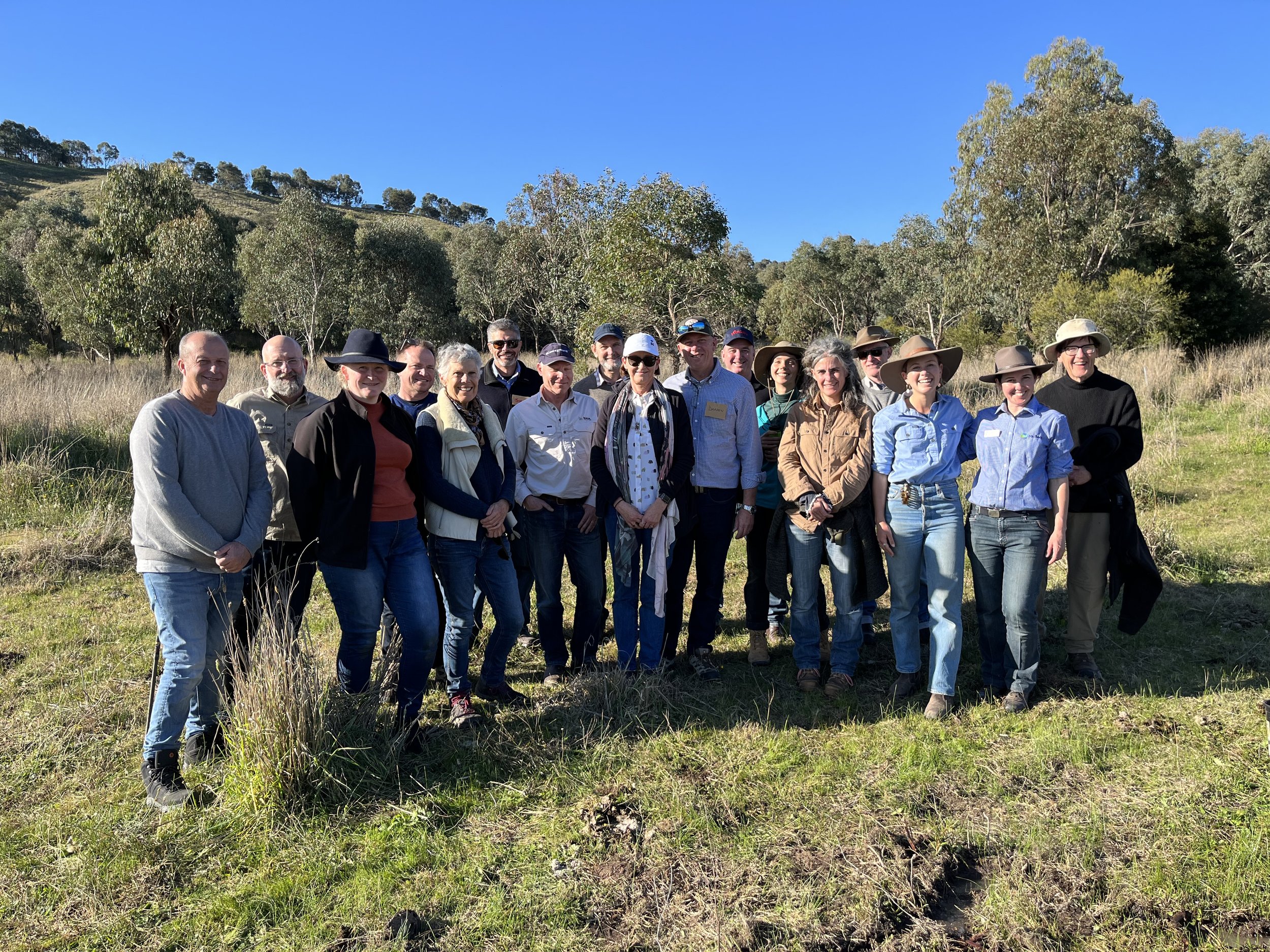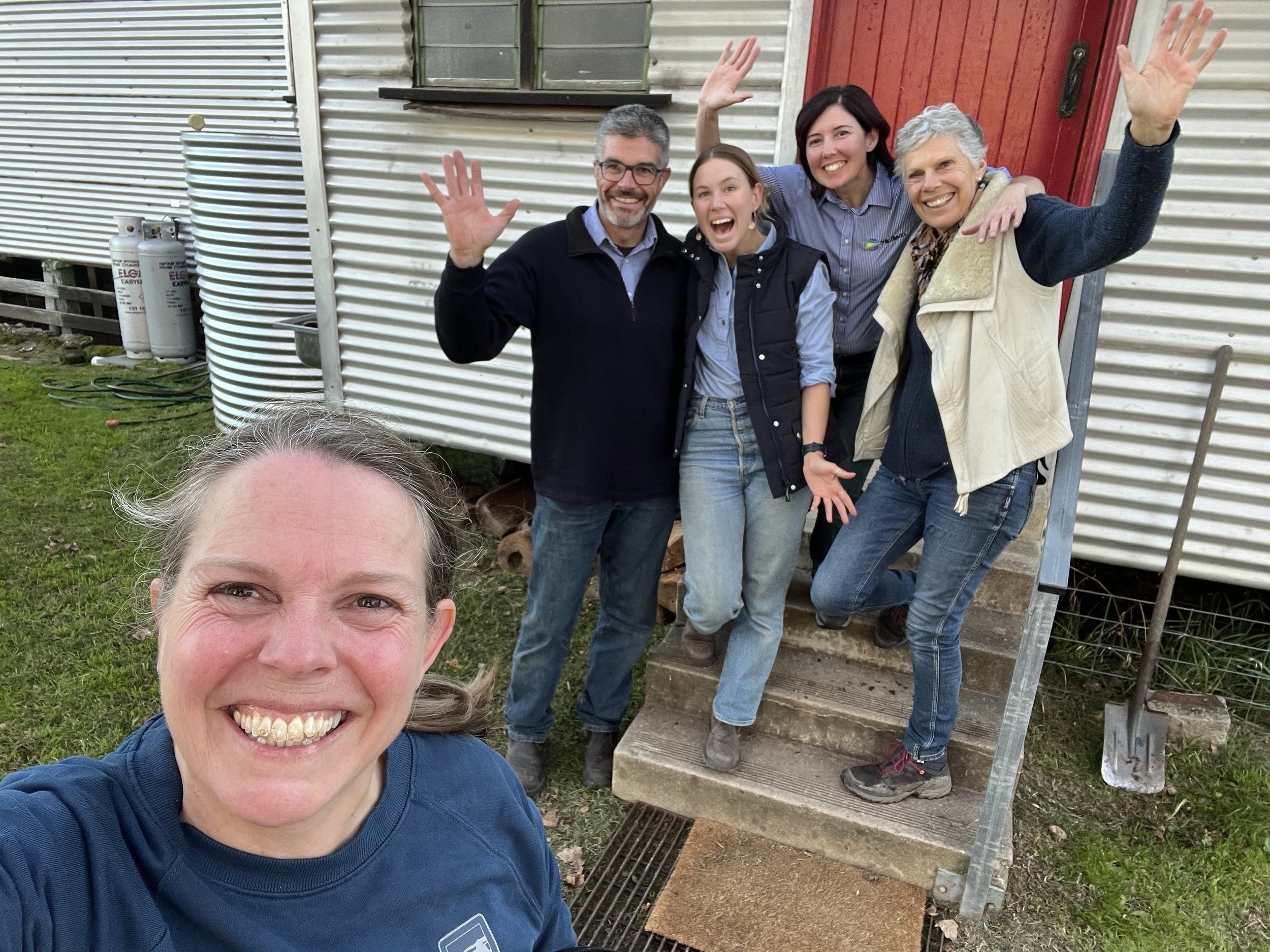A warm welcome
The frost was thick on the ground and the vast, quiet valleys were full of fog when we entered the Bibbaringa Shearing Shed at 7am for day one of a 2-day Rehydrating Your Landscape Bootcamp. Our generous host Gill Sanbrook already had the fire going and the kettle boiled to warm the frozen fingers and toes as excited participants arrived and settled in before the day was underway.
Gill welcomed us to her farm with an Acknowledgement of Country and acknowledged her place as the current custodian of the very old, rolling hills of the Waradjuri Country farm. Gill bought the overgrazed, drought-stricken property in 2007 and immediately set to work in the first year planting 60,000 trees along riparian lines, and has since continued to plant thousands of trees annually along further waterways and slopes to retain moisture and prevent erosion in the hilly landscape. Gill also arrived with a head full of holistic management principles and drew a map of how she wanted the landscape to look in 100 years’ time. This was an ‘a ha’ moment for participants, as over the next two days we visited several sites across the property and now, 16 years later, we can already see the outcomes of this work in place and we too, can envision how the property might look 2107.
Finding symbiosis in landscape management
Mulloon Institute’s Landscape Planner Erin Healy and Soil Land Food Agroecologist David Hardwick explained the effects of large and small water cycles, gravity, plants and the sun on our environments, we explored the ‘landscape puzzle’ and learned of the relationships between the different pieces, and we workshopped stream orders, flows and measurements via models, maps, discussions and site visits around this beautiful, regenerated property.
The day was rounded off looking at the evidence linking the synergy between grazing management on rehydrated landscapes with an inspiring talk by Peter Richardson, CEO of Maia Grazing using the case study of Bibbaringa as the perfect example of this symbiosis in action. The talk also took us into the realm of using data for financial and ecological goal-setting. As Peter said, “If you don’t know what the goal is, how do you know if you’re getting closer to it?”.
Unpacking the Landscape Rehydration Toolbox
Day two warmup was a game of Jenga in the shearing shed! A fun way to keep active on another chilly morning, with a lesson in environmental tipping points at its core. We then reviewed the models we had created inside the day before – full table landscape models which we first set up as how we envisioned Australian pre-colonial landscapes might have looked. We then remodelled them to current-day land uses, and our final round at the model tables was to take the knowledge we had learned on day one to rehabilitate and regenerate the current-day land uses with our new regeneration toolboxes. This activity brought the three groups together creatively, and the hands-on approach encouraged some great discussion on the techniques and encouraged the ‘why’ and ‘how’ of what we were learning.
Theory followed, and we delved deep into the Landscape Rehydration Toolbox, unpacking the differences and effects of ‘flow through’, ‘flow over’ and ‘flow around’ structures. Following another wonderful lunch by Gill and her neighbour, we jumped in the vehicles and headed out to more sites on the farm to see how some of the regenerated riparian areas had coped with the floods of 2022. Two areas we visited had indeed suffered erosion blowouts under intense water, aided by a large network of wombat holes and an early contouring experiment which had worked well until the ‘1 in 100-year’ floods came gushing down the high streamlines. The group worked together with Erin, David and Gill to discuss the best way forward to repair these weak spots, with the collective learning of the two days culminating in an educated discussion with realistic outcomes for rehabilitation.
Taking the learnings into the field
Our final modelling activity for the weekend saw the three groups rehabilitating small cuttings in the land created by Erin and Mulloon’s Education Coordinator Tam Connor – planning and organising what structures should go where, and then testing with buckets of water. Oh, the thrill of seeing the water slowing down and fanning across the miniature landscape, all the learning of the past two days succeeding with our efforts.
The group headed off to their homes from far and wide at the end of day two, buoyed with newfound knowledge to take home and apply to their own properties, and warmed by Gill’s generous spirit of sharing her property and hospitality with us all.
This project has been assisted by the New South Wales Government through its Environmental Trust.
“At Bibbaringa I look at the landscape from a creative perspective. Land managers are artists of the landscape. Every mark I make on the land is a pattern on the land. Every fence line, subdivision, contour or water storage has an effect on something else in the landscape. We need to be mindful of our impact on the land we manage.”
Gillian Sanbrook
2023 Bibbaringa Bootcamp graduates
L-R: Mulloon team Cass Moore, Jono Forrest, Erin Healy and Tam Connor with Bibbaringa custodian Gill Sanbrook.
